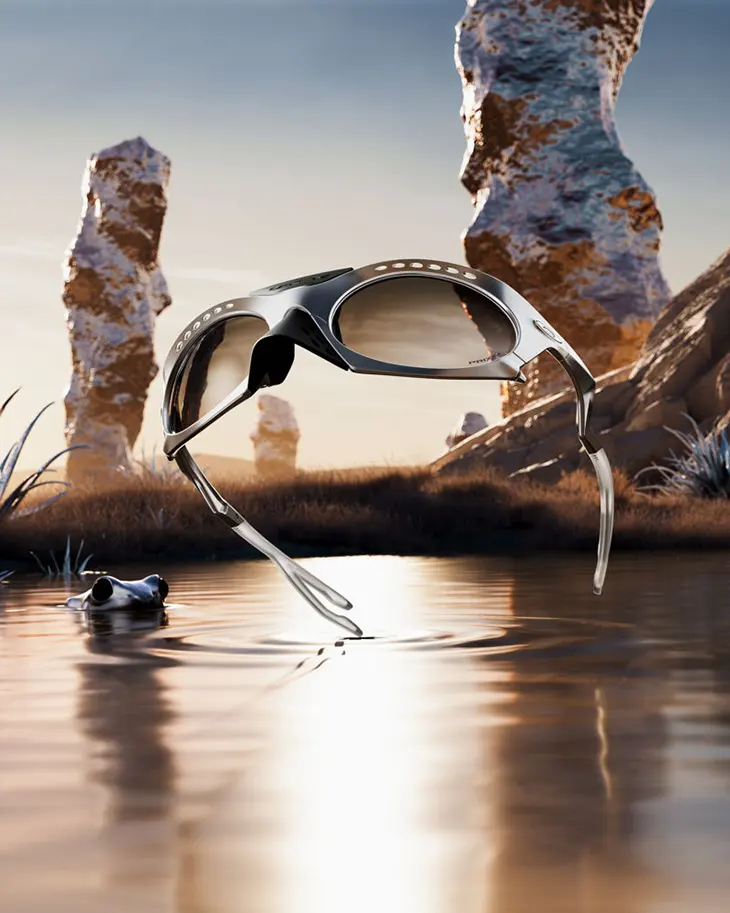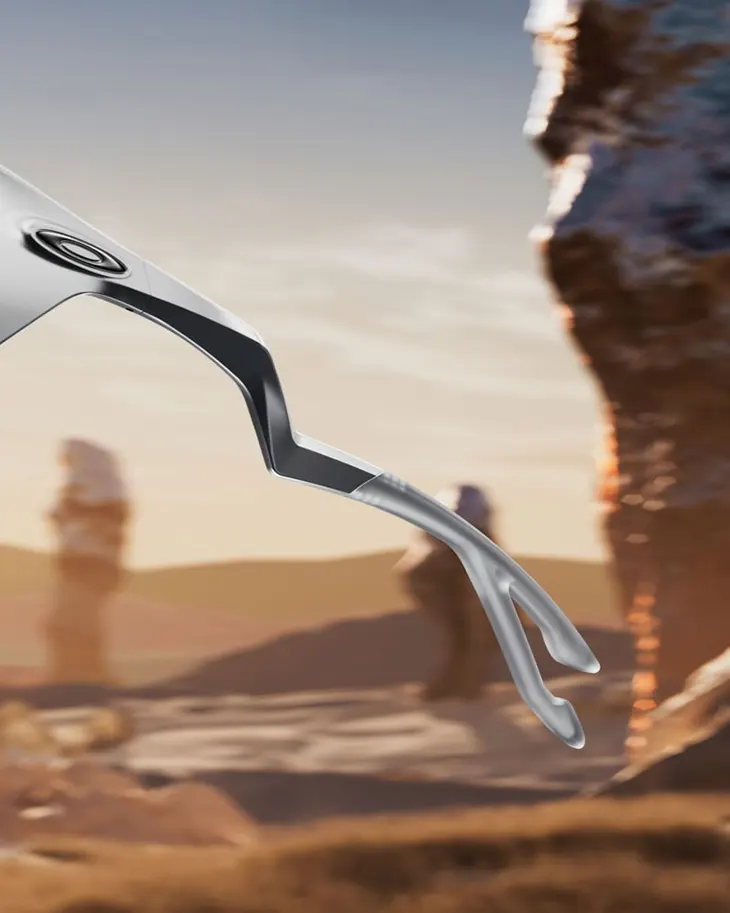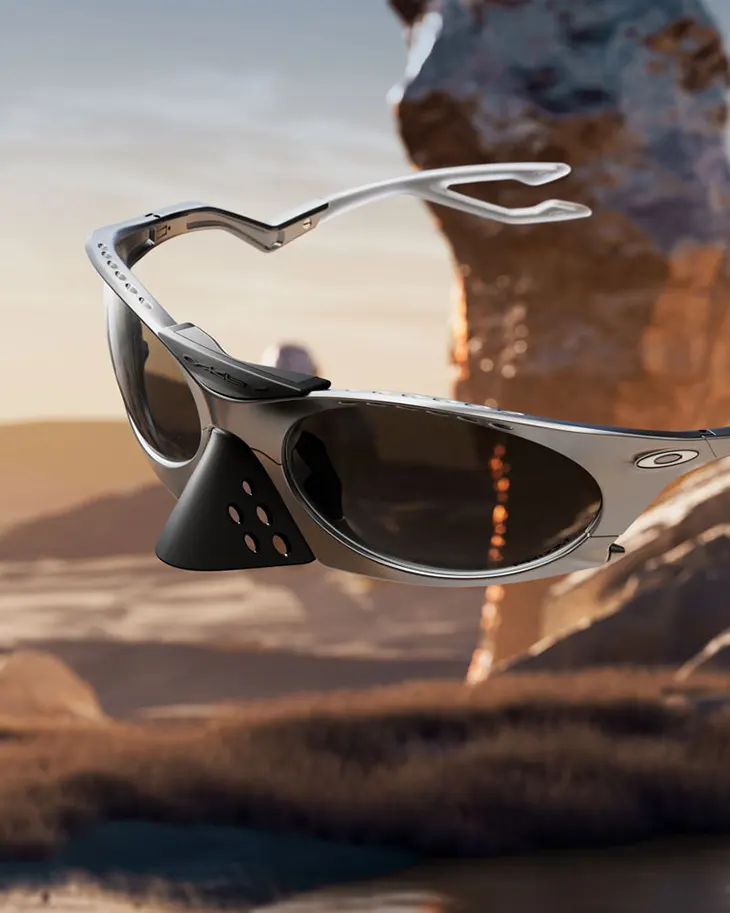
Oakley has returned to its archive to reintroduce the Plantaris frame, presenting the Plantaris Ti through a design lens that imagines the year 2075. The result is a reworked eyewear model that applies technological upgrades to a familiar silhouette. The new release reflects Oakley’s continued push into future-driven design while referencing its own history.
EYEWEAR
The updated frame uses titanium to create a lightweight structure. Oakley engineers treated the material to serve both performance and aesthetic goals. Prizm Lens Technology enhances visual clarity and contrast while maintaining a clean, sharp finish across the lenses.

Oakley reshaped the frame to support both form and function. The structure introduces adjustable temples, allowing wearers to fine-tune the fit. A removable nose cone creates an additional point of customization, giving the glasses added functionality and visual variation. The nose piece attaches securely but can detach for users who prefer a minimal setup.
Design details show a careful approach to both material and silhouette. The temples finish with clear silicone tips that offer comfort and reveal the inner structure of the glasses. According to Oakley, the temple design takes cues from the anatomy of frog legs. That influence appears in the visible “veins” of the frame, exposed through the transparent tips.


Oakley applies a methodical process to this update. The Plantaris Ti does not follow a nostalgic format. Instead, it uses archival reference as a foundation for a forward-facing concept. The frame adapts to shifting demands in sport, performance, and style without abandoning its original identity.

The titanium construction supports a lightweight experience on the face, which pairs with the flexibility of the adjustable arms. The fit suits various head shapes without requiring aggressive pressure. This flexibility improves wearability across different use cases, whether active or casual.

Oakley plans to release the Plantaris Ti on July 31 through its official website. The drop follows a series of recent launches that experiment with sculptural frames and modular parts.



















